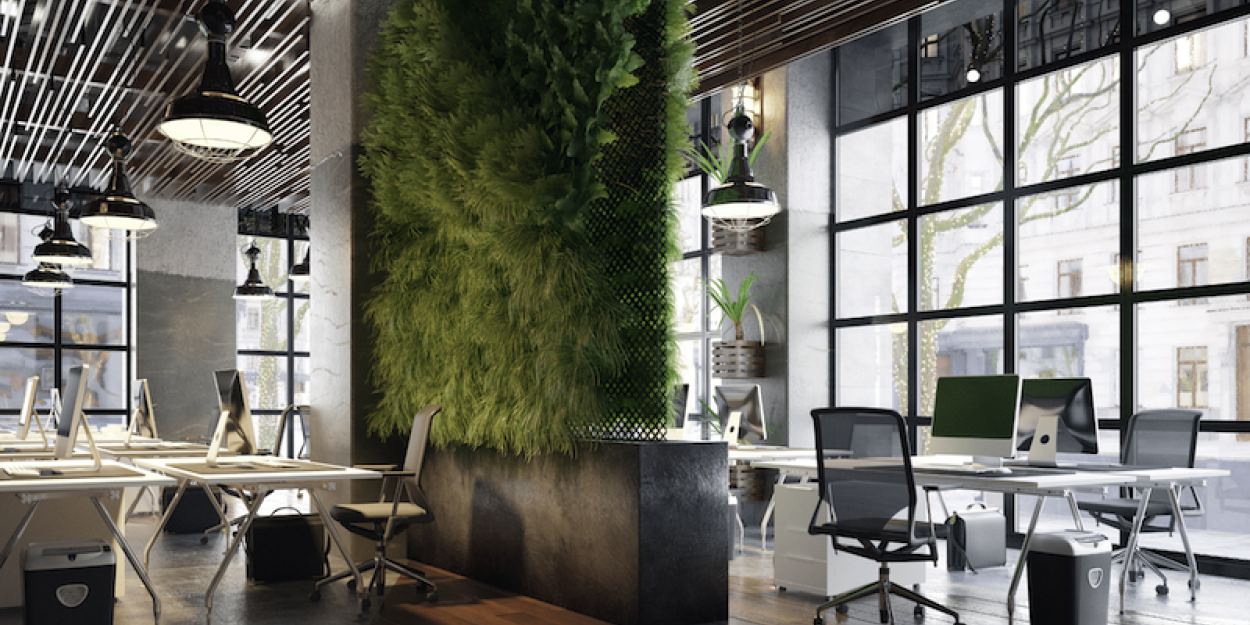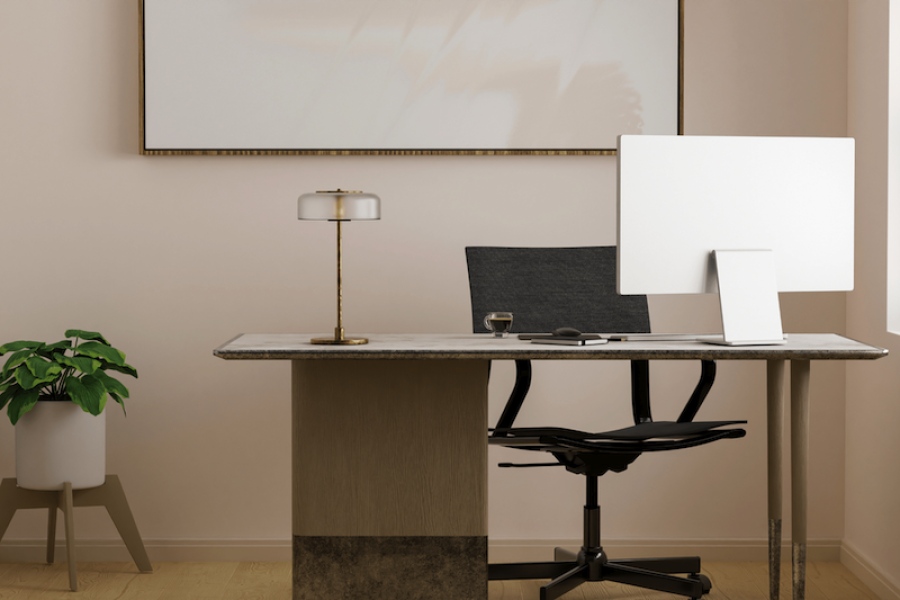
28.10.2022
Simply explained: Modern office concepts
In this guide, we will introduce you to the different types of flexible office spaces available on the market, along with their advantages and disadvantages.
When it comes to finding the right office space for your business, there are a lot of things to consider. Do you want a traditional lease or something more flexible? What kind of environment do your employees need to be productive? And what's your budget?
In this guide, we will introduce you to the different types of flexible office space available on the market. We'll also discuss the pros and cons of each option so you can make an informed decision about what's best for your business.
Modern office concepts
There are different types of flexible office space on the market. Here is an overview of the most common options:
Coworking Spaces
CoWorking Spaces are shared offices where businesses of any size can rent desks or office space on a short or long-term basis. This type of office space is ideal for freelancers, small businesses and entrepreneurs who want to be surrounded by like-minded people and share resources.
Serviced Office
Serviced offices are fully furnished and equipped offices that can be rented on a short or long-term basis. This type of office space is ideal for businesses that need a temporary solution for their office or want the flexibility to expand or downsize as needed.
Virtual offices
Virtual offices provide entrepreneurs and small businesses with a professional business address and answering service without the need to rent or buy physical office space. This type of office space is ideal for businesses that are still in the start-up phase or do not have the budget for traditional office space.
Coworking hybrids
Coworking hybrids are coworking spaces that offer both short-term and long-term memberships. This type of office space is ideal for businesses that want the flexibility to move in and out as needed, but also want the stability of long-term membership.

Modern office concepts: The differences
Which type of flexible office space is right for you? It can be confusing to navigate the world of co-working spaces. That's why we've summarised everything you need to know in this simple guide to the different types of flexible office space.
Before we go into the different types of office space, you should clarify the difference between flexible office space and commercial office space.
Flexible office space is exactly what it sounds like: a flexible alternative to traditional office space. Flexible because instead of a lease, you sign a user agreement - a contract between the operator of the workspace and the user that offers a lot of leeway for monthly or time-limited commitments. You can keep up with your growth and add or remove additional services that the operator offers.
However, signing a lease for commercial office space is much more complex - and you usually have to commit for 3, 5 or 10 years. This means that you are tied to the space no matter how your business grows or changes, which can lead to you paying for more office space than you need or outgrowing the space before the lease expires.
Flexible office space is a fantastic way for businesses of all sizes to respond to business or economic uncertainties, prepare for an increase in headcount and adjust overheads to match staff numbers. They also offer many other benefits to company culture, productivity and employee performance.
The typical office space:
A private office
A private office is a good option for companies that want to provide their employees with their own space.
They usually have a certain amount of storage space, access to meeting rooms and dedicated desks for each employee.
The advantages of a private office include:
Increased privacy: A private office gives your business the privacy it needs to hold meetings and make phone calls without being disturbed by others.
More control over the environment: In a private office, you can control the temperature, lighting and noise levels to create an environment conducive to productivity.
Better security: A private office is more secure than a shared office, and you have the peace of mind that your important documents are safe.
The disadvantages of a private office include:
Limited storage space: A private office usually has limited storage space, so you have to find another place to store your office supplies.
Not everyone is suited for it: If you are not the type of person who likes to work alone, a private office may not be right for you.
Difficult exchange between employees: Often employees sit in the office and meet colleagues spontaneously less often, so there is no exchange.

Shared office with own desk
Open-plan offices are designed to promote communication and overcome "boundaries". In this concept, a desk is not shared. Often larger departments share a common office.
The advantages of a shared office include:
Increased privacy: A shared office gives departments the privacy they need to hold meetings and make phone calls without being disturbed by others.
More control over the environment: In a shared office, you can control the temperature, lighting and noise levels, creating an environment conducive to productivity.
Better security: A shared office is safer than a hot-desk office because colleagues know each other and who is usually in the office. .
Lower costs: A shared office usually costs less and is a great way to try out a new workplace.
The disadvantages of a shared office include.
Limited storage space: A shared office usually has limited storage space, so you'll have to find another place for your office supplies.
Not everyone is suited to it: If you're not the type who likes to work in close quarters with others, a shared office may not be right for you.
Open plan offices silence employees: Open plan offices are supposed to encourage communication. But a study shows that this is not necessarily the case.

Hot Desk
A hot desk is a good option for companies that want to be flexible. Especially for employees who are not regularly in the office or frequently travel between different locations.
Hot desks are workstations that different employees share at different times. Employees look for a free workstation when they arrive or book it via tools like Zeitwart.de.
These hot desks have become particularly popular in coworking spaces. They offer access to meeting rooms, private phone booths or a dedicated desk for each employee.
This type of office space is ideal for companies that want to be flexible and offer their employees free access to workstations.
The advantages of a hot desk are:
Suitable for hybrid offices: A big plus of hot desking is the fact that it is perfectly suited for hybrid forms of work. When employees have the option of switching between home and office work, it often makes sense to offer flexibility in seating as well.
Promotes collaboration: Some proponents of hot desking argue that the arrangement can promote collaboration because employees can interact with different people instead of talking to the same colleagues every day.
Cost-effective and space-saving: One of the most important arguments for hot desking is the possibility to save space and thus money. Switching to an open hot desking layout can save up to 30 per cent of the cost of running an office, with the savings most evident in workplaces that previously used cubicles or private office space
Level playing field: Although hot desking is not suitable for every workplace or corporate culture, another positive aspect of hot desking can be that it creates a level playing field. Employees sit together and work side by side, regardless of where they are in the company hierarchy. This can be beneficial from induction of new employees to creating a work environment where employees feel comfortable and can contribute their ideas.
The office is tidier: One of the most overlooked benefits of hot desking is that the office is tidier. The explanation for this is simple: when employees don't have their own desk, they don't tend to leave things lying around in the office.
The disadvantages of a hot desk include:
Potential for disruption: One of the main arguments against hot desking is that it can cause disruption in the workplace. If employees are not guaranteed their own workspace, they may waste time looking for a free desk and setting it up to their liking. This is where Zeitwart can help quickly and easily.
Increased distractions at work:With the possibility of more interruptions at work, the risk of distractions at work also increases. There can be many reasons for this, such as teams needing to collaborate while sitting in different parts of the office, or people introducing themselves to people they haven't sat with before.
Loss of structure/hierarchy: In some companies, the level playing field that hot desking provides can be valuable, but it's not for everyone. Some companies need a clear hierarchy, while others need a clear structure of where they work and who they work with.
Can affect sense of belonging: To minimise staff turnover and increase morale, you should create a sense of belonging among staff. Hot desking can sometimes get in the way of team-building.

Collaborative spaces for your office
Huddle Space
A huddle space is a small meeting room designed for 2 to 4 people. It is ideal for short face-to-face conversations, instant brainstorming sessions with a small group, stand-ups, quick (hybrid) meetings or ad hoc calls with remote team members or vendors. These types of huddle meetings are no longer just face-to-face, but often hybrid.
Huddle spaces are usually equipped with a telephone, a video conferencing system and a whiteboard and are often used by companies that want to reduce the cost of renting an office.
This small room is not bookable, making it a very flexible and spontaneous solution for mixed team collaboration. A quiet meeting room, away from noise and distractions, where productivity is high and spontaneous meetings instantly boost teamwork.
The Huddle Space is technology-driven and fully focused on content sharing, hybrid and unified workflows.

Boardroom
Board rooms are often set up to foster collaboration in the boardroom and give board members an "aha" moment. They are equipped with simple, reliable tools that support decision-making.
Boardroom solutions must work flawlessly and be ready to use out of the box, without the need for additional support or training.
In the end, everyone saves time to focus on what's really important: growing your business.
Create the impact you want and tailor it to your needs. Combine your content with our future-proof and cost-effective visualisation and collaboration technologies for a smart, immersive meeting experience - today and tomorrow.
It's about giving your board members "aha experiences" and providing them with simple, reliable tools to help them make decisions. At the same time, you want to make your IT department's job easier. Boardroom solutions need to work flawlessly and be ready to use out of the box, without the need for additional support or training. In the end, everyone saves time to focus on what's really important: growing your business.
You know the needs of your board. We know our portfolio of high-end solutions. Together we can develop the optimal solution that achieves the impact you want and is tailored to your needs. Combine your content with our future-proof and cost-effective visualisation and collaboration technologies for a smart, immersive meeting experience - today and tomorrow.
This is how you decide which type of flexible office space is right for you.
Every business is different. That's why it's important to consider your specific needs when choosing a flexible office solution. Here are some questions to ask yourself before making a decision:
What is my budget?
What kind of environment do my employees need to be productive?
How much time do I want/can I spend on this office space?
Do I need any special equipment or furnishings?
What kind of clients do I want to attract?
What is the nature of my business?
Do I need a physical workspace or can I work remotely?
How often will my team need to meet face-to-face?
Are there any other special requirements/considerations?